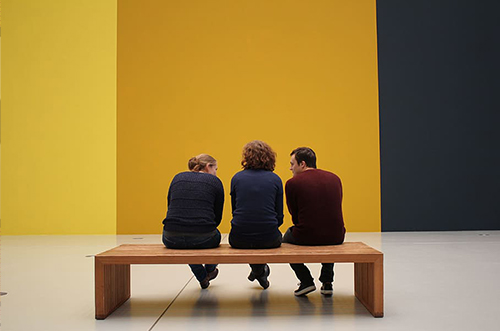When it comes to art pieces in art galleries, there’s the official price. And then there’s the price most people pay. Negotiation art gallery prices can be useful or a deal breaker, therefore art gallery prices are negotiable.
So, how are art gallery prices negotiable? In fact, bargaining is not only allowed, it is expected, a fact not widely known. It’s okay to negotiate a discount, therefore the size of the discount can depend on a range of conditions.
The art of bargaining is actually a clever move. Therefore is more complex than what looks like. So, we’re going to be reviewing how galleries price artworks, what you should know before requesting a discount and some tips in order to maximize your discount success. Art gallery prices are negotiable but … there are limits.
How art galleries price artworks

First, you should understand what galleries are actually making off the artwork they sell. Most commercial galleries have a general structure that splits the proceeds 50/50 with the artists. So if a piece is priced at 1,000€, the gallery gets 500€ of that, the artist gets 500€. Out of that 500€, the gallery is paying its rent, employees, bills, advertising fees, printing costs (as mailing cards, labels, vinyl lettering, and price lists for each exhibition), as well as miscellaneous expenses like umpteen boxes of wine for openings and events. That split portion is what funds everything. Many galleries have no other source of revenue besides half of the price of artwork sale.
So, if you try to ask for half off, there is no way that you are going to get it. Not even 40 percent or 30 percent, probably. It’s just not feasible for the gallery to do that if they are going to stay afloat. So I’d say, if you’re buying something big, the best you can do is negotiate a 10 or 5 percent discount — which on some pieces can be a serious chunk of change.
Many good-hearted galleries will not take the discount out of the artist’s portion, so it is likely all coming out of the gallery’s potential profit.
Galleries ultimately want to make the sell; they want you to buy something. And maybe more in the future. So negotiating is good for them. But understand that they truly cannot give discounts like a flea market. They didn’t buy the art for dirt cheap and there are a lot of mouths to feed on each sale, so to speak.
What to know before start negotiating

There are some points that you should know in order to maximize your successful discount. As everything in life you need to be prepared. Bargaining is a skill, and the more you practice the better you will get at it.
Find out the Price
According to their in-house policies, some galleries only share pricing information upon request and do not publicly list prices.If you are interested in one of these works, contact the gallery and ask for a quote.
Additional Costs
The full price of an artwork will go beyond the quoted price, as shipping, framing, installation, taxes, and insurance are all additional expenses. Before you start negotiating, you can ask whether the gallery would be willing to cover any of these added costs. At the very least, you will want to get an estimate for what these additional expenses might be.
Negotiating
The best time to initiate a price negotiation is after you have expressed to the gallery that you are really interested in the work and would like to purchase it. Consider approaching the subject by asking: “Is there a collector discount?” or “Is the price negotiable?” Galleries expect buyers to push back on price, so do not hesitate to ask. The standard discount is between 5% and 15%, depending on the overall price of the work and the gallery policy.
Galleries will be more willing to give you a discount if it seems like it would speed along your purchasing decision. However, galleries rarely offer discounts on artworks under $1,000, and some do not offer discounts to new clients.
Consider a Payment Plan
Some galleries can provide a payment plan, enabling you to pay for the piece in several instalments. You can simply ask : “Is there any way I can pay in instalments?” Note that in most cases you can only take possession of the work once it is paid in full.
Be Aware: Most galleries will not give you a discount and agree to a payment plan—you will probably have to choose one or the other.
After the sale, you can ask the gallery to let you know if other works by the artist become available or if they have an exciting upcoming show in your area. Galleries are more likely to give exclusive access and discounts to their most loyal clients.
Now that you have a better sense of distribution, I hope you understand why the prices often appear high. Not to mention, in most galleries in our region, artwork isn’t exactly flying off the racks. Many galleries do well, but people aren’t lining up to buy work on a daily basis. It’s a lot of work on the gallery’s end; each sale is very important and some buyers can take a lot of time to actually commit to a purchase (months, years).
So, if the 5-to-10-percent discount puts the artwork in your budget — meaning you wouldn’t buy it otherwise — absolutely, try to negotiate. However, if you’re looking for a seriously deep markdown, I’d recommend trying to find another work by that artist that’s within your price range, or just keep saving up for the piece you really want.
Conclusion
- Before you start the negotiation, ensure that the other party is fully empowered to make binding commitments
- Have a Strategy
- Do not disclose your budget or other limitations in your negotiating position
- Always have something to give away without hurting your negotiating position
- An offer is more than just a dollar amount. It must encompass all of the elements of the bargain and will normally comprise the basis for a contract that formalizes the agreement
If you want to learn how to negotiate follow this practical guide: https://www.entrepreneur.com/article/203168
If you want to know more about how art collectors get better deals check out article: https://marianacustodio.com/do-art-collectors-actually-need-curators/




